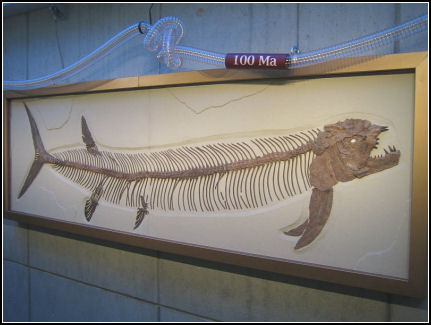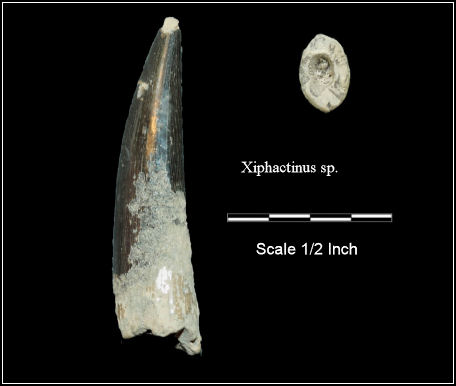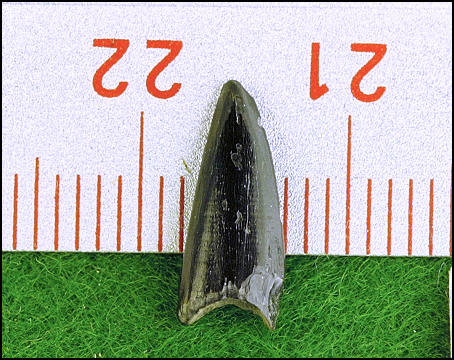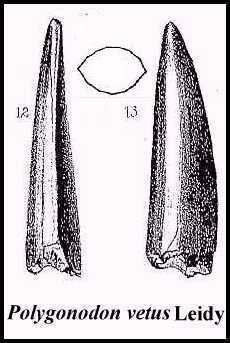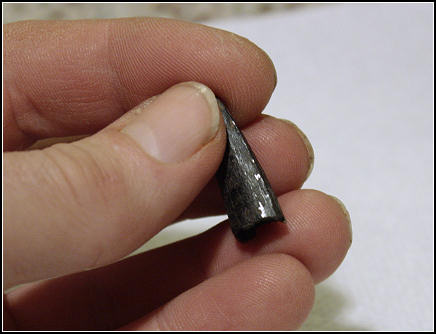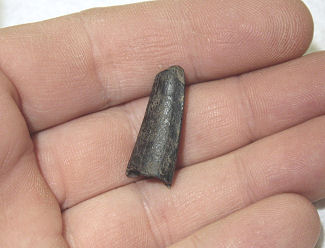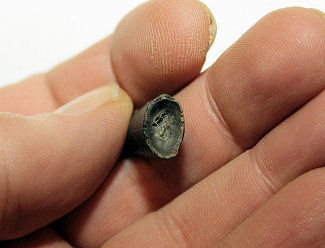|
Bulldog Fish Age Cretaceous - Occurrence Uncommon Xiphactinus was the largest bony fish of the Late Cretaceous, reaching lengths of upwards to 20 feet. A number of fossils specimens have been found with large partially undigested fish inside. This large predator was not capable of biting pieces off its prey and instead swallowed them whole. Like many of the boney fish in the New Jersey area the identifiable fossilized remains of this giant is limited to the teeth and vertebrae. The teeth can be a bit troublesome to identify and easily confused with the teeth of more common Enchodus. Xiphactinus teeth have a double cutting edge and are fluted (flat sections). The fluting is subtle and a strong light may be needed to see it.
Xiphactinus audax fossil in CosmoCaixa
Barcelona
Xiphactinus sp.
scale in mm.
The most distinct feature of the Xiphactinus
tooth is the fluting. This can be difficult
|
||
